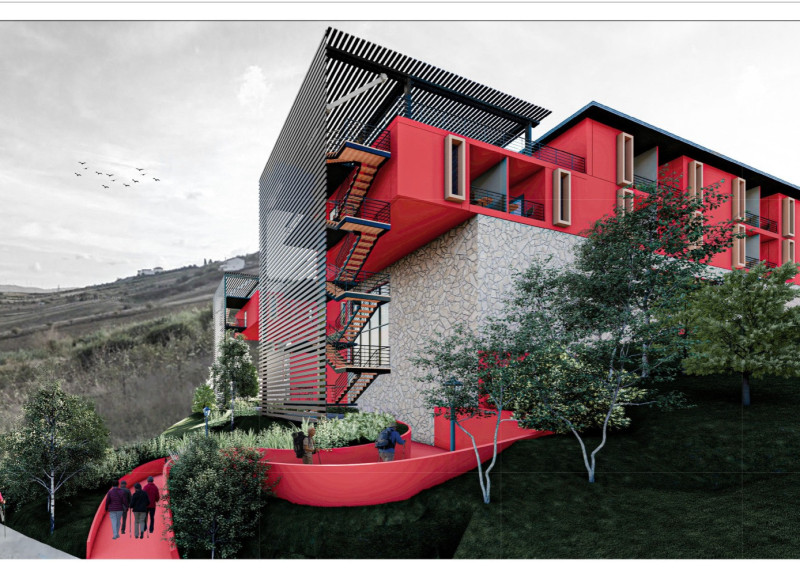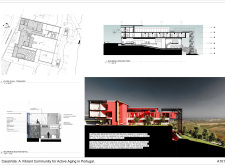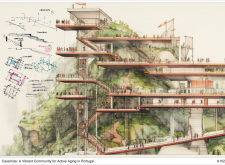5 key facts about this project
CasaVida is located in the picturesque landscapes of Portugal, designed to promote active aging through a focus on community-centric living. This architectural initiative is committed to creating environments that encourage social interaction and enhance the overall well-being of elderly residents. The project reflects contemporary design principles while respecting its natural context, integrating the surrounding terrain into its structural framework.
### Spatial Organization
CasaVida features a three-level design that varies in character and function. The lower level is constructed with robust materials, ensuring stability and support, while the upper floors transition to lighter materials that allow for ample daylight penetration. This vertical differentiation enhances the sense of openness within the interiors. The floor plan incorporates communal areas such as dining halls, lounges, and gardens, promoting engagement among residents. These spaces foster a strong community atmosphere, an essential component for supporting both mental and physical wellness.
### Material Selection
The structure's material palette is chosen for both its functional properties and visual appeal. Reinforced concrete forms the foundation, providing durability, while natural stone clads the lower levels, visually anchoring the building to its geological context. Wood elements introduce warmth and comfort in interior spaces, complemented by a metal framework that supports the building's form. Extensive glass façades ensure transparency and connectivity between the indoors and outdoors, enhancing natural light and emphasizing a relationship with the surrounding environment. Sustainable practices are a key consideration in the choice of materials, reflecting the project's commitment to ecological responsibility.
### Community and Outdoor Integration
CasaVida actively promotes an engaged lifestyle through its provision of communal spaces and amenities. Features such as shared gardens, walking paths, and recreational facilities encourage resident participation in activities that range from gardening to arts and sports. Additionally, design elements like terraces and balconies facilitate outdoor living and provide panoramic views of the landscape, while the inclusion of native vegetation supports both aesthetic appeal and local biodiversity. The adaptable layout further accommodates the diverse needs of its residents, ensuring ease of navigation and comfort throughout the facility.
In summary, CasaVida's architectural design seamlessly integrates community engagement with the natural environment, prioritizing the needs of elderly residents and highlighting sustainable building practices.






















































